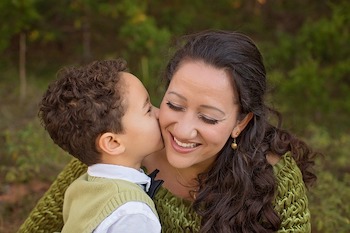
What You Can do Now to Prepare for Fire Season
By Becky Steinbruner, Fire Safety Council of Santa Cruz
The recent deadly Tubbs and Camp fires that devastated suburbs and wild land alike have given us all cause to ponder: What would I do if it happened here? Could such fires happen here? The answer is: Yes.
You can begin preparing your family and home now and be miles ahead when fire season arrives. The important thing is to just do something and get started, building muscle-memory for the actions you may have to actually perform when needed … much like a firefighter who trains repeatedly.

1) Get Connected
Make sure that your correct phone numbers and address are in the County emergency notification system. Register online at http://www.scr911.org and click on “CodeRed.” You can register phone numbers of family members and your home and work address, to make sure that you and your family receive emergency alerts affecting your home or business, any time during the day or night.
2) Five Minute Evacuation Plan
If you had five minutes to get out, what would you do? What would you absolutely have to take along, with the eerie thought that you may never be able to come back to things intact?
If you had NO TIME to grab anything at all (such was the case of my neighbor who awoke to find the neighboring house fire had rapidly spread to hers) … what would you do?
+ Take time now and walk yourself and family members through a drill. Doing so will build critical muscle memory that will kick in when you’re in such a panic that you just can’t think.
+ Station at your exits a grab-and-go kit with the basics: water, non-perishable food that is nourishing and comforting, a flashlight and spare batteries, copies of critically-important documents (insurance, medical, list of phone contacts for family members in case you don’t have your own phone with you), and any medications that you must take regularly on a strict schedule.
+ Keep a duplicate kit in your car, too, because fires may occur while you’re away from home, and you may not be able to return to your home to retrieve anything.
+ Take photographs of all rooms in your home…it could be helpful if you need to document losses with your insurance company later.
3) Your Pet Plan
Do you have pets that would need your help evacuating?
+ Have a bit of food in your grab-and-go kit for them, too.
+ What would you do for your pets if you were away when a fire begins, and you cannot get back to retrieve your pets? Think that through now: Do you have neighbors who could help? Do you know their phone numbers? Call them now, and work out a plan now for such an emergency. Walk yourself through evacuating your pets.
4) Defensible Space
If you live in the woods, now is a good time to look around outside your home and begin improving fire defensible space.
The strategy with creating defensible space is to start at your home and work out.
+ Begin by taking a tour around your house and imagine it is a hot, dry day. Your focus is on the five feet immediately surrounding your house. Look at the following with a critical eye: any shrubs, plants or organic mulches adjacent to your house, the state of any wooden fences and decks connected directly to your house, accumulated piles of leaves banked up in corners, patio furniture, brooms, or wooden ladders within five feet of your house, and any leaves and debris on your roof or in your gutters. Take action now to reduce or eliminate these hazards.
+ Then, look at the next 30 feet from your house. You’ll want to make sure it’s free of dead plants and lowhanging branches. Trim trees to create at least 10 feet of clearance from chimneys and walls. Plant fire-resistant plants. Stack firewood or construction materials at least 30 feet from any structures. If you are able, extend this fire defensible space to 100 feet from all structures by thinning shrubs, creating open space between bushes and trees, and removing all dead vegetation.
5) Get Started Now
If this seems overwhelming, choose one aspect of the work above, and start with that this week. Follow up the next week with another. What is most critical is that you just get started now, and build musclememory that will serve you and your family well when you need it most – maybe at 1am in the middle of this summer’s fire season.
You can find more information at the websites listed below.
Fire Safe Santa Cruz County website link: www.fire.ca.gov/communications/communications_firesafety_100feet
CalFire website link: www.fire.ca.gov/communications/communications_firesafety_100feet
Santa Cruz County Office of Emergency Services website link: www.co.santa-cruz.ca.us/Departments/EmergencyServices.aspx
Our Mission
The purpose of Fire Safe Santa Cruz County (FSSCC) is to educate and mobilize the people of Santa Cruz County to protect their community, homes, and environment from wildfire.
Contact Us
831-464-2950 xt 28
Fire Safe Santa Cruz County <[email protected]>


You May Also Like

The Live Oak Cradle To Career Initiative Supports Families: County Scoop May 2019
May 1, 2019
Bike to Work Day May 9 in Santa Cruz Rolls Out New Bike Challenge and 12 Free Breakfast Sites
May 1, 2019

